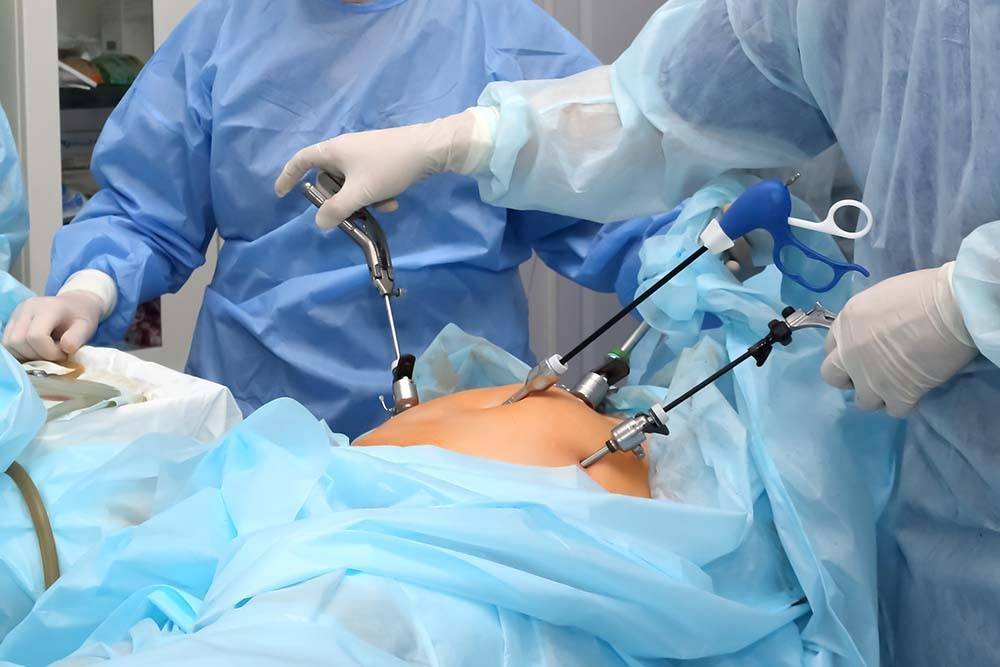Laparoscopic Cancer Surgery: A Safer and Faster Way to Recovery

Gastrointestinal (GI) cancers, including malignancies of the oesophagus, stomach, liver, pancreas, and colorectum, account for a substantial global health burden.
As medical science progresses, advanced cancer surgery options have improved survival rates and recovery outcomes.
Dr. Deep Goel, a surgical gastroenterologist with expertise in laparoscopic procedures, emphasises, “Patients diagnosed with GI cancers should discuss minimally invasive options with their surgical team. Laparoscopic procedures can reduce postoperative pain, accelerate healing, and help patients return to their normal activities sooner.”
This blog provides information about laparoscopic surgery, a technique that has transformed GI cancer care by offering patients a safer, faster, and more efficient path to recovery.
What is Laparoscopic Surgery for Gastrointestinal Cancer?
Laparoscopic surgery, also known as keyhole surgery, is a minimally invasive surgery for cancer that uses small incisions instead of large, open cuts.
During the procedure, a surgeon inserts a laparoscope (a thin, flexible tube with a camera and light) through small incisions. The camera provides a magnified, high-definition view of the internal organs, enabling the surgeon to perform precise surgeries with specialised instruments.
What is the Difference Between Laparoscopic Surgery and Traditional Surgery?
The following table compares laparoscopic surgery vs traditional surgery for cancer treatment:
| Laparoscopic surgery | Traditional surgery |
| Small incisions (0.5-1 cm) | Large incisions (10-20 cm) |
| Less postoperative pain | More pain due to larger incisions |
| Short hospital stay (1-3 days) | Longer hospital stay (5-10 days) |
| Fast recovery (2-4 weeks) | Longer recovery (6-8 weeks) |
What are the Benefits of Laparoscopic Cancer Surgery?
1. Minimally invasive
Laparoscopic surgery involves small incisions, resulting in reduced trauma to the body, less postoperative pain, and faster wound healing.
2. Lower risk of complications
Smaller incisions translate into a lower risk of complications such as infections, excessive bleeding, and wound reopening.
4. Improved cosmetic outcomes
Minimal scarring in laparoscopic surgery can positively impact a patient’s psychological well-being, especially for those undergoing procedures in visible areas of the body.
5. Increased surgical precision
Laparoscopic surgery provides a high-resolution view of the surgical site, allowing surgeons to perform complex procedures with greater accuracy.
“I had been living with chronic gastrointestinal issues that significantly affected my quality of life. After consulting with Dr. Deep Goel, I underwent a minimally invasive surgical procedure that resolved my problems. Dr. Goel’s expertise in minimally invasive surgery and dedication to his patients are commendable. I am grateful for his care,” says Muskan Arora, a happy patient of Dr. Deep.
Which Laparoscopic Surgeries Are Available for GI Cancer Treatment?
Many laparoscopic procedures are available for treating GI cancers, depending on the affected organ.
- Laparoscopic colectomy is performed for colorectal cancer, ensuring precise tumour removal with minimal disruption to surrounding tissues.
- Laparoscopic gastrectomy is used for stomach cancer, allowing for partial or total removal of the stomach with enhanced recovery benefits.
- Laparoscopic pancreaticoduodenectomy (Whipple procedure) is performed on patients with pancreatic cancer in select cases.
- Laparoscopic liver resection is an effective approach for removing tumours in the liver while preserving as much healthy tissue as possible.
These minimally invasive techniques offer improved outcomes, reduced complications, and faster recovery time after laparoscopic surgery.
What Can You Expect Before, During, and After Laparoscopic Surgery?
Pre-surgical preparations
- Medical evaluation, imaging tests, and consultations to check the patient’s suitability for laparoscopic surgery.
- Instructions regarding fasting and medication adjustments.
During the procedure
- Administration of general anaesthesia.
- Small incisions to insert the laparoscope and surgical instruments.
- Real-time visualisation of the surgical site on a monitor to guide tumour removal.
After the surgery
- Monitoring for vital signs and pain management.
- Early movement to alleviate the risk of blood clots.
- Instructions for wound care, activity limitations, and follow-up appointments.
“Laparoscopic surgery is not just about smaller scars; it also means a quicker return to adjuvant therapies like chemotherapy. This can make a difference in the overall cancer treatment journey,” says Dr. Deep Goel.
What are the Risks Associated With Laparoscopic Surgery for Cancer?
Here are some potential risks of laparoscopic surgery:
- Bleeding
- Infection
- Organ injury
- Gas embolism
- Anaesthesia risks
- Blood clots
- Hernia formation
- Conversion to open surgery (if complications arise)
A patient of Dr. Deep, who underwent laparoscopic surgery for colon cancer, shares her experience, “Dr. Deep suggested me laparoscopic surgery, and I’m glad I went with it. My recovery was faster than I had expected. Within a few weeks, I was back on my feet. I can’t thank Dr. Goel and his team enough for their skill and care.”
What is the Standard Cost of Laparoscopic Surgery in India?
The standard cost of laparoscopic surgery in India lies between INR 3,00,000 and INR 5,00,000 (USD 3500 and USD 6000 for international patients). This cost varies according to the type of gastrointestinal cancer, hospital facilities and location, and the surgeon’s expertise. Additional expenses, like diagnostic tests, hospital stays, and post-surgical care, can also influence the total cost.
Conclusion
Laparoscopic surgery has helped gastrointestinal cancer treatment by offering a safer, faster, and more efficient alternative to traditional open surgery. As research continues, the integration of artificial intelligence and augmented reality into laparoscopic procedures may further improve outcomes by providing real-time guidance and predictive analytics.
FAQs
1. Can laparoscopic surgery be used for advanced-stage GI cancers?
While primarily used for early-stage cancers, laparoscopic surgery can be considered for select advanced-stage GI cancers based on individual patient factors.
2. Is laparoscopic surgery costlier than open surgery?
Laparoscopic surgery may have higher upfront costs due to specialised equipment, but it often results in overall cost savings from shorter hospital stays and quicker recovery.
3. How does laparoscopic surgery impact the long-term survival rate for GI cancer patients?
Laparoscopic surgery offers similar long-term survival rates to open surgery, with a 5-year survival rate of nearly 73% for gastric cancer patients.
4. What is the success rate of laparoscopic surgery for GI cancers?
Laparoscopic surgery for gastrointestinal cancers has a success rate between 80-89%, based on cancer stage, location, and patient health.
5. Are there any dietary restrictions after laparoscopic GI cancer surgery?
Patients are advised to start with a liquid or soft diet, slowly reintroducing solid foods as tolerated.
Explore more blogs: What Are the Differences Between Minimally Invasive Surgery and Open Surgery for Gallbladder Cancer?

